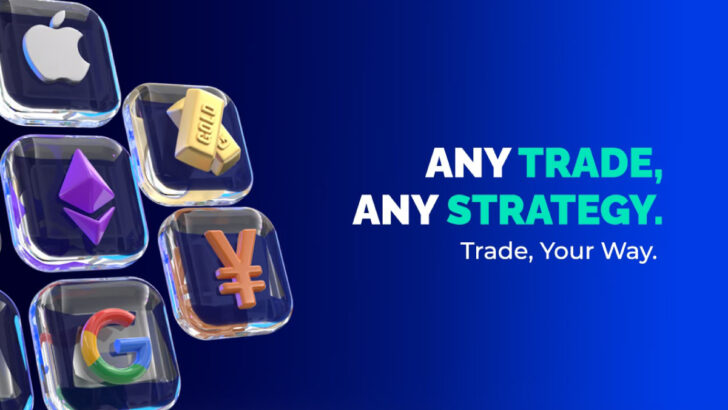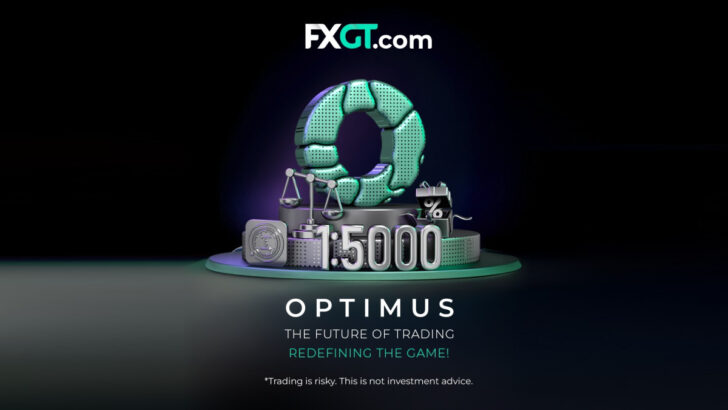Categories
How to make profit in Forex market and recover from big losses?
The article outlines essential strategies for succeeding in Forex and CFD trading, emphasizing the importance of market analysis, creating personal trading rules, and mastering trading tools.


Take your time to read this article if you are struggling to make profit in Forex and CFD market.
What it takes to succeed in trading the markets?
If we try to answer the question briefly, then the trader profession consists of three important skills:
- Observe and analyse the market;
- Trade in a disciplined manner – using your own system and rules;
- Make effective deals, open and close them with profit.
Analyse the market first
Observation skills and understanding of the processes taking place in the markets do not come immediately, but eventually.
To do this, you need to constantly “keep your finger on the pulse” of important economic news and events, which can cause serious resonance and price changes for the whole group of financial instruments.
Always and everywhere, using your methods and models of active trading or investing, you need to consider the overall situation and the mood in the markets as well as specific seasons of reporting, publication of economic indicators and market expectations on them.
At first glance it may sound complicated, but in fact, it is a matter of skill, persistence and a constant presence in the professional environment.
The ability to analyse should include not only your skills with graphs and indicators, but also an understanding that there is no such trading system that will withstand sharp and strong movements in the market caused by the panic reaction of participants to the publications.
Create your own rules
Gradually, rooky traders start to form their own rules of trade.
They are not formed immediately and permanently, but with the continuous development and improvement.
But it is the personal system, combined with self-discipline (willingness to strictly follow own rules in trade), and in conjunction with money management (financial discipline) that can give you the necessary trade advantage over other market participants.
In addition to this combination, it is important for a trader to understand and accept his psychology and temperament.
These will determine what instruments and time periods of work (time-frames) you will be most comfortable with, and thus your trade will be effective.
If you tend to take quick decisions, you are stress proof, going to be satisfied with small but more frequent profit and, it is very important, that you have time for intensive trade – then intraday trade on the active tools will be the best solution.
Alternatively, if you do not have time for intensive trade and tend to a quieter model analysis and trade, the medium range will be comfortable and correct for you.
Go to Hercules.Finance Main Page
Master the trading tools
And in the third place, it is important to understand and master techniques of trade and necessary skills.
And the most effective way to do it is in connection to specific financial instruments.
A feature of all trading tools popular among traders is the fact that each of them has its regular players, own laws and features of movement and behaviour.
In summary, we can say that any rooky trader needs HIS PERSONAL system.
Built on his personal trading rules that take into account psychology, own skills and experience taken from successful traders and systems.
And of course, your personal system should take into account the size of your trading account.
Know the trustworthy sources and report
Also, the rooky trader should adequately perceive and evaluate numerous publications and recipes of “magic” systems, published in near-stock industry by many authors, such as books, computer programs, analytical tools, or services.
Most of such materials are written by venerable authors who are not successful traders and earn money by selling their thoughts on the market.
Quite often, these experts – theorists teach that market should be forecasted.
We are careful about any forecasts and our experience shows that all the trader has is the current information on the market and its history, and these data should be relied on in work.
Certainly, there is a number of economic indicators and news that can influence the market, but a rooky would better not play with them and stay out of the market altogether.
What Are The Key Elements Of A Good Trade Set Up?
We all have different trading styles depending on the financial instruments we are trading, our financial goals, our time horizon and our availability.
But one thing that remains constant, regardless of the above factors, is the need to wait for good trading set-ups before entering the market.
A trading set-up identifies conditions that precede your entry.
Certain condition must be met.
Think of it like the pre-flight checklist a pilot makes before taking off.
Traders are the same. When you want to open a trading position, it’s important to ask yourself:
‘are there any reasons to not make this trade?’
To identify good trading opportunities and have great trading set-ups, there are two important components to combine: direction and entry levels.
Let’s have a look at these components to see how they play a vital role in your search for good trade set-ups.
1. The direction of the trade
The direction of the trade is used to determine whether a financial asset is heading upward, downward, or moving sideways.
To spot the direction of an asset, you can use some technical tools, such as trend lines, support and resistance levels or continuation/reversal/indecision chart patterns.
The idea here is to define the current trend and where you are in the trend, as there are several phases within a trend.
It’s also important to follow fundamental factors that can have an impact on the price.
Central banks’ decisions are among the most important ones, as most long-term trends come directly from monetary policy and interest rates applied.
Regarding the short-term direction, economic releases are also essential to follow, as they can trigger volatility.
One statistic may not mean much to you, but when you group several, you can understand the health of any given country.
You can then start to anticipate the decisions of that country’s central bank regarding its monetary policy, looking at growth, inflation and employment figures.
Start Investing in Forex market
2. Your entry levels
After you have determined the direction of the trend, you need to find your entry level.
To find these levels, you may like to use technical analysis.
If you like to confirm a break in a new direction or continuation, then trend lines and support and resistance levels are handy.
Short-term trend lines provide good day-to-day entry levels, while long-term lines are important to monitor because they can offer a bigger reward to risk opportunities.
One reason is that most influential investors (hedge funds, banks and other financial institutions) place more emphasis on them, and so when a long-term trend line is broken, it’s a significant event because a lot of the orders of these larger institutions are placed at these levels.
The use of fundamental drivers and technical levels provide a structure to a trading strategy, thereby allowing for the avoidance of constantly changing trading strategies.
Check the latest Forex Bonus Promotions
The minimum you need is the direction and entry levels.
If you have these two key components that make up good trades, you can trade with confidence and trade successfully.
After that, you can start to work on developing which kind of chart patterns or charting indicators you want to follow, why and how – depending on your trading style to exploit the maximal potential of your trading.
Do not anticipate too much of a price movement, while following it closely to make the most of the momentum of the trend.
Some examples of the factors you can look at are the following:
- overbought/oversold indicators
- recent lows/highs/ranges
- reversal, continuation, indecision chart patterns
- inter and intra-market correlations
- specific factors of the traded assets
- economic calendar
- timezone and volatility levels
Before each trade, be sure to religiously follow the guidelines you set up regarding which parameters to follow.
Your trade set up should be described in your trading plan, which gathers all necessary information about your trading strategy, as well as your risk and money management.
List of Online Forex and CFD Brokers
The Power of Bullish and Bearish Divergences for Trading Setups
Finding the right trading set-ups in line with your trader profile and trading strategy, is probably one of the most challenging aspects to becoming a professional trader.
Being able to wait for the right trading setups to appear before entering or exiting the market is essential if you want to become a profitable trader.
So, how can you find the right set-ups? Let’s dive in and focus on the power of bullish and bearish divergences while deciding which trading set-ups to follow.
What are divergences?
In addition to price action analysis, traders often use technical indicators to filter out market noise.
Simply put, a divergence occurs when the price movement and the indicator’s movement evolve in the opposite direction.
When a technical indicator disagrees with the price action, it’s often a good indication for trend traders to adjust their risk control parameters.
It’s also a good trading opportunity for more active and technical traders to enter the market, as this divergence could suggest a high probability of a trend change.
A bearish divergence happens when prices form higher highs on your chart, but the indicator shows lower highs.
It indicates that traders are less bullish and prices might be overbought.
This divergence often happens at the end of a uptrend.
On the other hand, a bullish divergence occurs when prices form lower lows, while the indicator forms higher lows.
In this case, traders are less bearish, and prices might be oversold. This divergence often happens at the end of an downtrend.
Which mathematical indicators to use?
Divergences can be used with a wide range of indicators, but they are often oscillators, whether they are bounded indicators such as the RSI or Stochastic – showing an overbought/oversold situation, or unbounded indicators such as the Momentum Indicator, or the MACD.
Of course, any indicator will display lows and highs, but the most important thing is to spot extreme situations when it happens.
If you use the RSI indicator, extreme situations occur when the RSI line is above the 70-level, or below the 30-level.
With the Stochastic, anything above 80 counts as overbought, and below 20 oversold.
If you are using mathematical indicators without standardised extreme levels, such as Momentum, CCI, MACD, then analyse the indicator’s past performance.
This will give you an indication as to where the previous tops and bottoms are.
Remember, using divergences in your trading set-ups can provide very reliable signals.
However, it should be used in conjunction with other trading tools or indicators, so then there is additional confirmation that the trade you will open will have a greater probability of winning, while providing a potential low-risk opportunity.
For instance, you can use trend lines and candlestick patterns to confirm the reversal situation you have spotted with a divergence.
If you are using oscillators, you could also wait until they exit their extreme zones, or you can draw important levels on the oscillators themselves.
The most important thing is to train your eyes to detect false signals from profitable trading opportunities, so then you do not enter too early.
When a divergence appears, it doesn’t automatically mean that prices are going to reverse.
With a divergence there is a greater chance that prices are about to reverse, but it sometimes just means that prices are losing momentum.
If you decide to enter the market to take advantage of a price reversal, always use a stop-loss that you can place below the last bottom in case of bullish divergences, and above the last top in case of bearish divergences.
List of Forex Bonus Promotions
6 Practical steps to take to recover from a big loss
Whether it’s because of a flash crash on the market (like the recent February sell-off), a nuclear accident in another part of the world or simply a lack of discipline, every trader has experienced big losses at least once in their career.
Losing money on the markets is part of the trading game, but it doesn’t make it less difficult when it happens.
It takes strength, motivation and professionalism to bounce back after a big loss, as it will usually affect your self-confidence and your way of thinking objectively in front of the markets.
You can experience the full range of negative emotions from sadness to anger and loneliness to guilt and anxiety.
It isn’t easy to recover from such losses, either mentally or financially – but it can be done.
Open Forex account with brokers
Here are some of the useful steps you can take to recover from a big trading loss:
Step 1: Stop trading for a while
Losing money can make you not think straight, as you start to question yourself, your decision-making process, and your ability to make money from trading.
Usually, you want to win your losses back, but you cannot make any proper decisions, so it’s best to try to relax and forget a bit about trading and the markets.
Step 2: Take time to analyse why you lost money
After the break, it’s important to take a step back and analyse the reasons why you lost money.
A large part of your losses will usually be due to a lack of money and risk management on your part.
So, you know what you can do to avoid such negative and toxic behaviour in the future.
Step 3: Accept responsibility and learn from your mistakes
When you blame everything and everyone except yourself for your losses, you are actually admitting you are not in full control of your own trading.
You are consequently acknowledging you can’t fix what just happened.
It’s important to learn from your mistake, so then you don’t repeat it.
Another way to do this is to look at losses as opportunities.
It may be difficult to see the positive side of things when you’ve just had a trading loss.
But if you look at it as an opportunity to learn, to set more strict trading rules or to be more disciplined with your money management rules, then taking a loss will not be as threatening as it looks.
See the list of Forex Bonus Promotions
Step 4: Remember why you were successful at first
You developed a trading plan that you tested and worked in the past. You developed a certain confidence over time about this system.
Go back to the basics: work on your trading plan and make adjustments if needed.
There is no trading strategy that makes money forever and in all market conditions.
It is best to understand which conditions your strategy works best in: rangy markets, volatile markets or breakouts.
If you analyse and know your trading strategy and the best market conditions that suit it, then you can have a more objective and fact-based view of your losses.
This will also help in making adjustments or developing new trading strategies for different market conditions.
Step 5: Wait before trading again with real money
You shouldn’t go straight back to trading with a real account – you should give yourself time to heal psychologically.
If you start trading directly after a big loss, you will be in a revenge state-of-mind, where you will try to get back the money you lost.
You might not grasp the best trading opportunities, or you could panic once in position.
It may be an idea to use a demo account to practice and to ease your way back into the market again. Using the Royal’s trading platform, you can run a demo account to build up your confidence and to test the efficiency of your trading strategy.
Some traders maintain a demo account specifically to test trading ideas and strategies.
Step 6: Once you are back to real trading, start with smaller position sizes and leverage
It’s important not to start with the same position size and leverage you used before you experienced a big loss.
Start small, and build up your position sizes as your confidence builds.
Only increase the size of your positions after you’ve strung together some consistent wins.







